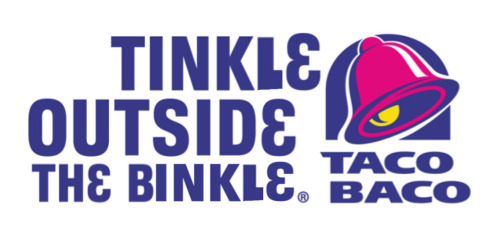This Is Art. (via Zebrakebebra)






This is art. (via zebrakebebra)
More Posts from Youaurendenial and Others
Have you ever wanted to make your own propaganda poster?
Now you can go churn out some vintage memes to refresh the economy


wholesome meme creation. back to meme roots






2016: This Year at NASA!
As 2016 comes to a close and prospects of the new year loom before us, we take a moment to look back at what we’ve accomplished and how it will set us ahead in the year to come.

2016 marked record-breaking progress in our exploration activities. We advanced the capabilities needed to travel farther into the solar system while increasing observations of our home and the universe, learning more about how to continuously live and work in space and, or course, inspiring the next generation of leaders to take up our journey to Mars and make their own discoveries.
Here are a few of the top NASA stories of 2016…
International Space Station
One Year Mission…completed!

NASA astronaut Scott Kelly and Russian cosmonaut Mikhail Kornienko returned to Earth after spending a year in space. Testing the limits of human research, findings from their One Year Mission will help send humans farther into space than ever before.
Commercial Resupply

Commercial partners Orbital ATK and SpaceX delivered tons (yes literally tons) of cargo to the International Space Station. This cargo supported hundreds of science experiments and technology demonstrations crucial to our journey to Mars.
Mars
Expandable Habitats

The Bigelow Expandable Activity Module (BEAM) was one of the technology demonstrations delivered to the space station in April. Expandable habitats greatly decrease the amount of transport volume for future space missions.
Booster Test Firing

In June, a booster for our Space Launch System (SLS) rocket successfully fired up. It will be used on the first un-crewed test flight of SLS with the Orion spacecraft in 2018. Eventually, this rocket and capsule will carry humans into deep space and one day…Mars!
InSight

This year we updated the milestones for our InSight mission with a new target launch window beginning in May 2018. This mission will place a fixed science outpost on Mars to study its deep interior. Findings and research from this project will address one of the most fundamental questions we have about the planetary and solar system science…how in the world did these rocky planets form?
Solar System and Beyond
Juno

On July 4, our Juno spacecraft arrived at Jupiter. This mission is working to improve our understanding of the solar system’s beginnings by revealing the origin and evolution of Jupiter.
OSIRIS-REx

In September, we launched our OSIRIS-REx spacecraft…which is America’s first-ever asteroid sample return mission. This spacecraft will travel to a near-Earth asteroid, called Bennu, where it will collect a sample to bring back to Earth for study.
James Webb Space Telescope

In February, the final primary mirror segment of our James Webb Space Telescope was installed. This will be the world’s most powerful space telescope ever, and is scheduled to launch in 2018. Webb will look back in time, studying the very first galaxies ever formed.
Kepler

In May, our Kepler mission verified the discovery of 1,284 new planets. Kepler is the first NASA mission to find potentially habitably Earth-sized planets.
Earth Right Now
Earth Expeditions

Our efforts to improve life on Earth included an announcement in March of a collection of Earth Science field campaigns to study how our planet is changing. These Earth Expeditions sent scientists to places like the edge of the Greenland ice sheet to the coral reefs of the South Pacific to delve into challenging questions about how our planet is changing…and what impacts humans are having on it.
Small Satellites

In November, we announced plans to launch six next-generation Earth-observing small satellite missions. One uses GPS signals to measure wind in hurricanes and tropical systems in greater detail than ever before.
Aeronautics Research
Our efforts in 2016 to make air travel cleaner, safer and quieter included new technology to improve safety and efficiency of aircraft arrivals, departures and service operations.
X-Plane

In June, we highlighted our first designation of an experimental airplane, or X-plane, in a decade. It will test new electric propulsion technology.
Drone Technolgy

In October, we evaluated a system being developed for the Federal Aviation Administration to safely manage drone air traffic.
Technology
Electric Propulsion

We selected Aerojet Rocketdyne to develop and advanced electric propulsion system to enable deep space travel to an asteroid and Mars.
Spinoffs

Our technology transfer program continued to share the agency’s technology with industry, academia and other government agencies at an unprecedented rate.
Centennial Challenges

Our Centennial Challenges program conducted four competition events in 2016 to spark innovation and enable solutions in important technology focus areas.
Watch the full video recap of ‘This Year @NASA’ here:
Make sure to follow us on Tumblr for your regular dose of space: http://nasa.tumblr.com
Black (Hole) Friday!
It’s Black Friday, but for us, it’s the annual Black Hole Friday! Today, we’ll post awesome images and information about black holes.

A black hole is a place in space where gravity pulls so much that even light cannot get out. The gravity is so strong because matter has been squeezed into a tiny space…sort of like all of those shoppers trying to fit into the department stores today.
Because no light can get out, you can’t see black holes with the naked eye. Space telescopes with special tools help find black holes (sort of how those websites help you find shopping deals).

How big are black holes? Black holes can be large or small…just like the lines in all of the stores today. Scientists think the smallest black holes are as small as just one atom. These black holes are very tiny but have the mass of a large mountain!

So how do black holes form? Scientists think the smallest black holes formed when the universe began. Stellar black holes are made when the center of a very big star collapses. When this happens, it causes a supernova.

A supernova is an exploding star that blasts part of its mass into space.

Supermassive black holes are an altogether different story. Scientists think they were made at the same time as the galaxy they in they reside. Supermassive black holes, with their immense gravitational pull, are notoriously good at clearing out their immediate surroundings by eating nearby objects. When a star passes within a certain distance of a black hole, the stellar material gets stretched and compressed – or “spaghettified” – as the black hole swallows it. A black hole destroying a star, an event astronomers call “stellar tidal disruption,” releases an enormous amount of energy, brightening the surroundings in an event called a flare. In recent years, a few dozen such flares have been discovered.

Then there are ultramassive black holes, which are found in galaxies at the centers of massive galaxy clusters containing huge amounts of hot gas.
Get more fun facts and information about black holes.
Follow us on social media.
Make sure to follow us on Tumblr for your regular dose of space: http://nasa.tumblr.com



New in the shop! Available in mug, shirt and sweatshirt.
Buy here.
Build it. Test it. Then, Fly it.
Hundreds of pieces of rockets, rocket engines, boosters, space capsules, launch structures and more have been built, tested and prepared to take us on our Journey to Mars. Across the country, America’s space program is hard at work to launch the Orion space capsule on its first uncrewed flight atop the powerful Space Launch System in 2018.

But enough of the artist concepts, let’s take a look at the real components being made across the country to prepare for this milestone:
Orion Spacecraft

From testing individual bracket strength to space flight tests, the Orion team is testing every component and subsystem of the spacecraft to ensure crew safety, operational reliability and backup systems are built into the spacecraft from the ground up. To date, hundreds of tests have been conducted across the program to verify and validate that Orion’s design, manufacturing and systems integration meet the rigorous requirements for safe human space exploration.

Orion engineers have subjected the spacecraft to deafening sound blasts, Earthquake-like vibrations and hurricane-force winds in preparation for Orion’s next flight. Large structures such as Orion’s crew and service modules were tested at Lockheed Martin’s Waterton Facility in Littleton, Colorado, and our Glenn Research Center’s Plum Brook Station in Sandusky, Ohio. Motor and engine tests have been conducted at Aerojet Rocketdyne’s facility in Sacramento, California, and Orbital ATK’s facilities in Promontory, Utah, and Elkton, Maryland.

Water impact testing of Orion’s landing capabilities were conducted at our Langley Research Center in Hampton, Virginia, and the capsule’s massive parachute system has been tested in various landing scenarios at the U.S. Army’s Yuma Proving Ground in Arizona. Final assembly, integration and pre-flight testing will take place at our Kennedy Space Center in Florida.
Space Launch System

Towering more than 200 feet, the Space Launch System will be the world’s most powerful rocket. Consisting of a core stage and two boosters, RS-25 engines, and the software to power it all, the initial configuration will provide 15 percent more thrust at launch than the Saturn V rocket and carry more than three times the mass of the Space Shuttle. When complete, we’ll be ready to fire up the largest and most powerful rocket ever built on it’s inaugural launch.

At our Michoud Assembly Facility in New Orleans, a talented crew of humans with the latest in machinery is building SLS’s core stage. The core stage is the structural backbone of SLS that stores cryogenic liquid hydrogen and liquid oxygen that feed the vehicle’s four RS-25 engines.

For two monumental minutes in June, the SLS solid rocket boosters fired up in an amazing display of power as engineers verified their designs in the last full-scale test before SLS’s first flight. The smoke and fire may last only two minutes, but engineers at NASA’s Marshall Space Flight Center in Huntsville, Alabama, and Orbital ATK in Promontory, Utah, prepared weeks — even months — in advance for that test.
Launch Site

At our Kennedy Space Center in Florida, teams are hard at work transforming the historic Vehicle Assembly Building for the launches of tomorrow. Like a stairway to the heavens, these upgrades include the building and installation of platforms to access the new Space Launch System rocket.

Before SLS roars into deep space from Launch Pad 39B, our Ground Systems program continues making significant upgrades and modifications to the historic launch pad to accommodate the new rocket’s shape and size.

To make room for this new generation of rockets, workers took down the gantry that stood in support of the Space Shuttle program for 30 years and replaced it with, well, not much really. But that was the idea. Whenever SLS heads out to the pad in the future, it’s going to bring its support structure with it. With that in mind, Pad 39B will provide all the fluids, electrical, and communications services to the launch platform.

All of this work is essential to get SLS flight ready before it’s maiden voyage and is an important step on our Journey to Mars.
Next Steps
The work happening across the country is preparing us for the first flight of SLS and Orion in 2018. That first, uncrewed test flight is critical to paving the way for future flights that will carry astronauts to deep space, including on a journey to Mars.

Ultimately, the SLS maiden flight will help us prepare for future human missions. During this flight, currently designated Exploration Mission-1, the spacecraft will travel thousands of miles beyond the moon over the course of about a three-week mission.

It will launch on the most powerful rocket in the world and fly farther than any spacecraft built for humans has ever flown. Orion will stay in space longer than any ship for astronauts has done without docking to a space station and return home faster and hotter than ever before.
Make sure to follow us on Tumblr for your regular dose of space: http://nasa.tumblr.com
Ad Astra, John Glenn (1921-2016)
An astronaut.
A pilot.
A husband.
A father.
A United States Senator.
An American hero.
An original.

John Glenn (1921-2016) was all those things and more. When he rocketed into space on Feb. 20, 1962, to become the first American to orbit Earth, the flight set the nation on course to meet ever-more ambitious goals.
The life and career of Senator Glenn eclipses those of many. In spite of his accomplishments, he was a humble and gracious man (and 4-term U.S. senator).
During Glenn’s first flight, a scheduled 30-minute test to determine whether Glenn could fly the capsule manually became a matter of life and death when the automatic system malfunctioned after the first orbit.

“I went to manual control and continued in that mode during the second and third orbits, and during re-entry,” Glenn recalled later. “The malfunction just forced me to prove very rapidly what had been planned over a longer period of time.” Another problem seemed even more serious – telemetry indicated the spacecraft’s heat shield was loose. It seemed possible that Glenn and the spacecraft would be incinerated on re-entry. Glenn left the retrorocket pack in place to steady the heat shield during re-entry. “It made for a very spectacular re-entry from where I was sitting,” he said. Big chunks of the burning material came flying by the window.

He wasn’t sure whether the flaming debris was the rocket pack or the heat shield breaking up. “Fortunately,” he told an interviewer,“ it was the rocket pack – or I wouldn’t be answering these questions.”

In the words of President Obama, who awarded him the Presidential Medal of Freedom in 2012: “When John Glenn blasted off from Cape Canaveral atop an Atlas rocket in 1962, he lifted the hopes of a nation. And when his Friendship 7 spacecraft splashed down a few hours later, the first American to orbit the Earth reminded us that with courage and a spirit of discovery there’s no limit to the heights we can reach together. With John’s passing, our nation has lost an icon and Michelle and I have lost a friend. John spent his life breaking barriers, from defending our freedom as a decorated Marine Corps fighter pilot in World War II and Korea, to setting a transcontinental speed record … The last of America’s first astronauts has left us, but propelled by their example we know that our future here on Earth compels us to keep reaching for the heavens. On behalf of a grateful nation, Godspeed, John Glenn.”

Glenn left the Astronaut Corps in 1964 and resigned from the Marine Corps in 1965. And, after some time in private industry ran for and was elected ti the U.S. Senate in 1974, carrying all 88 counties of Ohio. He was re-elected in 1980 with the largest margin in Ohio history. Ohio returned him to the Senate for a third term in 1986. In 1992 he was elected again, becoming the first popularly elected senator from his state to win four consecutive terms. During his last term he was the ranking member of both the Governmental Affairs Committee and the Subcommittee on Air/Land Forces in the Senate Armed Services Committee. He also served on the Select Committee on Intelligence and the Special Committee on Aging. He was considered one of the Senate’s leading experts on technical and scientific matters, and won wide respect for his work to prevent the spread of weapons of mass destruction.

In 1998, Glenn flew on the STS-95 Discovery shuttle flight, a 9-day mission during which the crew supported a variety of research payloads including deployment of the Spartan solar-observing spacecraft, the Hubble Space Telescope Orbital Systems Test Platform, and Glenn’s investigations on space flight and the aging process.
NASA Administrator Charlie Bolden remembers, “Senator Glenn’s legacy is one of risk and accomplishment, of history created and duty to country carried out under great pressure with the whole world watching.”
Today, we honor him for all that he stood for and continues to stand for – grace under pressure, humility, ability, strength.
Godspeed, John Glenn.

This Week @ NASA--April 14, 2017
Cassini and the Hubble Space Telescope, two of our long-running missions, are providing new details about the ocean-bearing moons of Jupiter and Saturn. Hubble’s monitoring of plume activity on Europa and Cassini’s long-term investigation of Enceladus are laying the groundwork for our Europa Clipper mission, slated for launch in the 2020s. Also, Shane Kimbrough returns home after 171 days aboard the Space Station, celebrating the first Space Shuttle mission and more!

Ocean Worlds
Our two long-running missions, Cassini and the Hubble Space Telescope, are providing new details about “ocean worlds,” specifically the moons of Jupiter and Saturn.

The details – discussed during our April 13 science briefing – included the announcement by the Cassini mission team that a key ingredient for life has been found in the ocean on Saturn’s moon Enceladus.

Meanwhile, in 2016 Hubble spotted a likely plume erupting from Jupiter’s moon Europa at the same location as one in 2014, reenforcing the notion of liquid water erupting from the moon.

These observations are laying the groundwork for our Europa Clipper mission, planned for launch in the 2020s.

Welcome Home, Shane!
Shane Kimbrough and his Russian colleagues returned home safely after spending 173 days in space during his mission to the International Space Station.

Meet the Next Crew to Launch to the Station
Meanwhile, astronaut Peggy Whitson assumed command of the orbital platform and she and her crew await the next occupants of the station, which is slated to launch April 20.

Student Launch Initiative
We’ve announced the preliminary winner of the 2017 Student Launch Initiative that took place near our Marshall Space Fight Center, The final selection will be announced in May. The students showcased advanced aerospace and engineering skills by launching their respective model rockets to an altitude of one mile, deploying an automated parachute and safely landing them for re-use.

Langley’s New Lab
On April 11, a ground-breaking ceremony took place at our Langley Research Center for the new Systems Measurement Laboratory. The 175,000 square-foot facility will be a world class lab for the research and development of new measurement concepts, technologies and systems that will enable the to meet its missions in space explorations, science and aeronautics.

Yuri’s Night
Space fans celebrated Yuri’s Night on April 12 at the Air and Space Museum and around the world. On April 12, 1961, cosmonaut Yuri Gagrin became the first person to orbit the Earth.

Celebrating the First Space Shuttle Launch
On April 12, 1981, John Young and Bob Crippin launched aboard Space Shuttle Columbia on STS-1 a two-day mission, the first of the Shuttle Program’s 30-year history.

Watch the full episode:
Make sure to follow us on Tumblr for your regular dose of space: http://nasa.tumblr.com

-
 pomesa reblogged this · 1 month ago
pomesa reblogged this · 1 month ago -
 deadlybreakfast liked this · 1 month ago
deadlybreakfast liked this · 1 month ago -
 only-lonely-stars liked this · 2 months ago
only-lonely-stars liked this · 2 months ago -
 adventuretolkienlover reblogged this · 2 months ago
adventuretolkienlover reblogged this · 2 months ago -
 weatherwhim liked this · 3 months ago
weatherwhim liked this · 3 months ago -
 notamushimaster reblogged this · 3 months ago
notamushimaster reblogged this · 3 months ago -
 notamushimaster liked this · 3 months ago
notamushimaster liked this · 3 months ago -
 wienerlicious reblogged this · 4 months ago
wienerlicious reblogged this · 4 months ago -
 garbagefunnel reblogged this · 4 months ago
garbagefunnel reblogged this · 4 months ago -
 garbagefunnel liked this · 4 months ago
garbagefunnel liked this · 4 months ago -
 pokkin liked this · 8 months ago
pokkin liked this · 8 months ago -
 jackolanternsummers liked this · 8 months ago
jackolanternsummers liked this · 8 months ago -
 neverforgetthesunlove liked this · 9 months ago
neverforgetthesunlove liked this · 9 months ago -
 sunset-oracle reblogged this · 9 months ago
sunset-oracle reblogged this · 9 months ago -
 trubbw86 liked this · 10 months ago
trubbw86 liked this · 10 months ago -
 un-lys-sur-la-glace liked this · 11 months ago
un-lys-sur-la-glace liked this · 11 months ago -
 asmanwoks liked this · 1 year ago
asmanwoks liked this · 1 year ago -
 pockyneedssleep reblogged this · 1 year ago
pockyneedssleep reblogged this · 1 year ago -
 pockyneedssleep liked this · 1 year ago
pockyneedssleep liked this · 1 year ago -
 ash-dark-desires liked this · 1 year ago
ash-dark-desires liked this · 1 year ago -
 rumbleonthemill liked this · 1 year ago
rumbleonthemill liked this · 1 year ago -
 eylim95 reblogged this · 1 year ago
eylim95 reblogged this · 1 year ago -
 crobody reblogged this · 1 year ago
crobody reblogged this · 1 year ago -
 jasontoddenthusiastt reblogged this · 1 year ago
jasontoddenthusiastt reblogged this · 1 year ago -
 cinnamonroastcrunch reblogged this · 1 year ago
cinnamonroastcrunch reblogged this · 1 year ago -
 sandrabullockthehedgehog liked this · 1 year ago
sandrabullockthehedgehog liked this · 1 year ago -
 cadia98 reblogged this · 1 year ago
cadia98 reblogged this · 1 year ago -
 cynicaesura reblogged this · 1 year ago
cynicaesura reblogged this · 1 year ago -
 cynicaesura liked this · 1 year ago
cynicaesura liked this · 1 year ago -
 ohheyheyitsjj reblogged this · 1 year ago
ohheyheyitsjj reblogged this · 1 year ago -
 rainingmoondrops reblogged this · 1 year ago
rainingmoondrops reblogged this · 1 year ago -
 rainingmoondrops liked this · 1 year ago
rainingmoondrops liked this · 1 year ago -
 the-spoon-fairy reblogged this · 1 year ago
the-spoon-fairy reblogged this · 1 year ago -
 annoyinginternetstranger liked this · 1 year ago
annoyinginternetstranger liked this · 1 year ago -
 baconmancr reblogged this · 1 year ago
baconmancr reblogged this · 1 year ago -
 zestyaardvarks reblogged this · 1 year ago
zestyaardvarks reblogged this · 1 year ago -
 sizeabletoblerone reblogged this · 1 year ago
sizeabletoblerone reblogged this · 1 year ago -
 valstraxx reblogged this · 1 year ago
valstraxx reblogged this · 1 year ago -
 blue-eyed-boss liked this · 1 year ago
blue-eyed-boss liked this · 1 year ago -
 heylittlejess liked this · 1 year ago
heylittlejess liked this · 1 year ago -
 owlferret liked this · 1 year ago
owlferret liked this · 1 year ago
